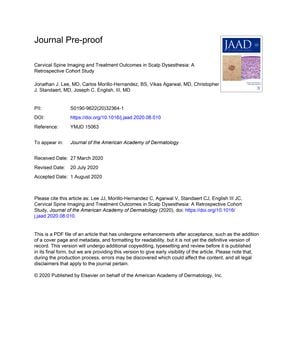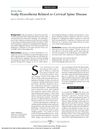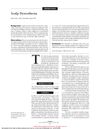Cervical Spine Imaging and Treatment Outcomes in Scalp Dysesthesia: A Retrospective Cohort Study
August 2020
in “
Journal of The American Academy of Dermatology
”

TLDR Degenerative changes in the lower cervical spine are common in patients with abnormal scalp sensations, with some improvement seen using pain medication and physical therapy.
This retrospective cohort study investigated the association between cervical degenerative disc disease (CDD) and scalp dysesthesia (SD), a condition characterized by abnormal scalp sensations without a primary dermatologic disorder. The study included 65 patients from a single academic outpatient medical dermatology clinic, with cervical spine X-rays obtained for 62 patients. Degenerative changes were found in 96.5% of the 29 radiographs reviewed, with a mean Cervical Degenerative Index (CDI) score of 9.2, indicating a correlation between age and CDI. Treatment outcomes for 41 patients showed that 34.1% experienced moderate to full improvement, primarily with gabapentin and physical therapy, while 65.9% had no to mild improvement. The study suggests a higher prevalence of degenerative changes in patients with SD, particularly in the lower cervical spine, and highlights modest treatment success with neuropathic pain medications and physical therapy. However, the study is limited by its single-center design, lack of a control group, and incomplete radiographic data. Controlled studies and further investigation into SD's pathophysiology are recommended.


